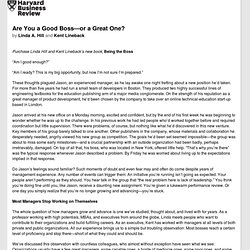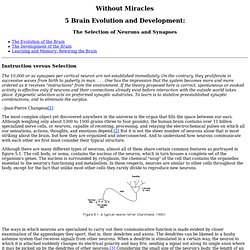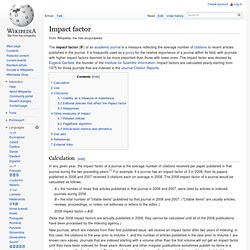

Are You a Good Boss-or a Great One? Purchase Linda Hill and Kent Lineback’s new book, Being the Boss “Am I good enough?”

“Am I ready? This is my big opportunity, but now I’m not sure I’m prepared.” These thoughts plagued Jason, an experienced manager, as he lay awake one night fretting about a new position he’d taken. For more than five years he had run a small team of developers in Boston. Jason arrived at his new office on a Monday morning, excited and confident, but by the end of his first week he was beginning to wonder whether he was up to the challenge. Do Jason’s feelings sound familiar? Most Managers Stop Working on Themselves The whole question of how managers grow and advance is one we’ve studied, thought about, and lived with for years. We’ve discussed this observation with countless colleagues, who almost without exception have seen what we see: Organizations usually have a few great managers, some capable ones, a horde of mediocre ones, some poor ones, and some awful ones.
Modularity of Mind. First published Wed Apr 1, 2009 The concept of modularity has loomed large in philosophy and psychology since the early 1980s, following the publication of Fodor's ground-breaking book The Modularity of Mind (1983).

In the twenty-five years since the term ‘module’ and its cognates first entered the lexicon of cognitive science, the conceptual and theoretical landscape in this area has changed dramatically. Especially noteworthy in this regard has been the development of evolutionary psychology, whose proponents argue that the architecture of the mind is more pervasively modular than the Fodorian perspective allows.
Where Fodor (1983, 2000) draws the line of modularity at the low-level systems underlying perception and language, post-Fodorian theorists such as Carruthers (2006) contend that the mind is modular through and through, that is, up to and including the high-level systems responsible for thought. 1. Each of the items on the list calls for explication. Figure 1. Innateness. 2. Five.pdf (application/pdf Object)
Without Miracles: Brain Evolution and Development: The Selection of Neurons and Synapses. Without Miracles 5 Brain Evolution and Development: The Selection of Neurons and Synapses Instruction versus Selection The 10,000 or so synapses per cortical neuron are not established immediately.

On the contrary, they proliferate in successive waves from birth to puberty in man. . . . --Jean-Pierre Changeux[1] The most complex object yet discovered anywhere in the universe is the organ that fills the space between our ears. Although there are many different types of neurons, almost all of them share certain common features as portrayed in figure 5.1.
The ways in which neurons are specialized to carry out their communicative function is made evident by closer examination of the appendages they sport, that is, their dendrites and axons. For one neuron to influence another, the two must be connected, and this is accomplished by junctions called synapses (figure 5.2). Impact factor. Calculation[edit] In any given year, the impact factor of a journal is the average number of citations received per paper published in that journal during the two preceding years.[1] For example, if a journal has an impact factor of 3 in 2008, then its papers published in 2006 and 2007 received 3 citations each on average in 2008.

The 2008 impact factor of a journal would be calculated as follows: A = the number of times that articles published in that journal in 2006 and 2007, were cited by articles in indexed journals during 2008. B = the total number of "citable items" published by that journal in 2006 and 2007. ("Citable items" are usually articles, reviews, proceedings, or notes; not editorials or letters to the editor.) 2008 impact factor = A/B. (Note that 2008 impact factors are actually published in 2009; they cannot be calculated until all of the 2008 publications have been processed by the indexing agency.) Use[edit] Criticisms[edit] Validity as a measure of importance[edit] The Thomson Reuters Impact Factor - Science - Thomson Reuters.
This essay was originally published in the Current Contents print editions June 20, 1994, when Thomson Reuters was known as The Institute for Scientific Information® (ISI®).

See also: "The agony and the ecstasy: the history and meaning of the Journal Impact Factor" Librarians and information scientists have been evaluating journals for at least 75 years. Gross and Gross conducted a classic study of citation patterns in the '20s.1 Others, including Estelle Brodman with her studies in the '40s of physiology journals and subsequent reviews of the process, followed this lead.2 However, the advent of the Thomson Reuters citation indexes made it possible to do computer-compiled statistical reports not only on the output of journals but also in terms of citation frequency. And in the '60s we invented the journal "impact factor. " Informed and careful use of these impact data is essential.
The JCR provides quantitative tools for ranking, evaluating, categorizing, and comparing journals. Dr. Fine Paper - Home.